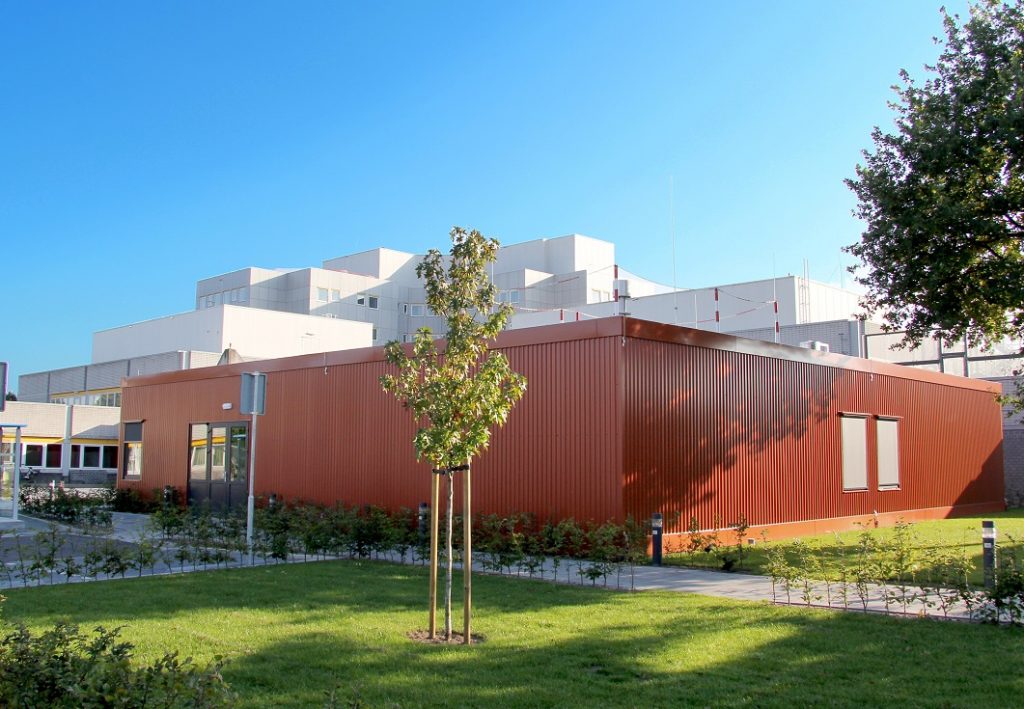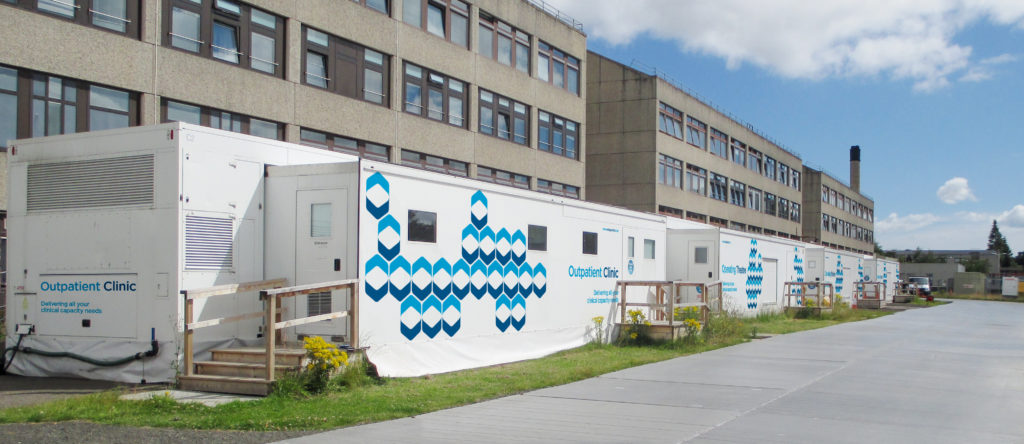Mobile healthcare: the key to accessible diagnostics

How to deliver flexible, patient-centric services where they are needed, in a cost-effective manner. Steve Peak, Delivery and Development Director of Vanguard Healthcare Solutions, considers the issues.
That the NHS urgently needs to reform diagnostic pathways is not news to anyone. Successive reports from the NHS, including its landmark Long Term Plan, have cemented diagnostics as a key priority – but the secondary challenges of Covid-19 has instilled a newfound sense of urgency. To be ready for the next pandemic, we can no longer concentrate diagnostic capacity in hospitals.
An exacerbated situation
All things considered; our hospitals have coped relatively well with the pandemic, but the secondary disruption has had grave consequences. Appointments have been cancelled, diagnostic procedures postponed, and actions taken to free up beds in hospitals have impacted negatively on community health provision and reduced the number of beds available in hospitals for non-urgent patients.
One of the most visible effects has been the marked increase in the number of people waiting for diagnostic tests and treatments. While activity has risen since the first lockdown it has not yet recovered to pre-pandemic levels.
Those waiting the longest have suffered the most. In September 2020, despite activity increasing substantially, a third of patients on the list had waited more than six weeks for a scan or other diagnostic test, and for endoscopy that figure was over 50 per cent. The number of patients waiting more than 13 weeks has come down from its peak in June but still stood at more than 200,000 in September.
Also causing concern are ominous warnings of a “hidden backlog” of deferred referrals. As waiting times for getting an appointment with a consultant have also become longer. In a consultant-led system with reduced patient flows, an increased wait for an appointment can turn into a clinical bottleneck.
Reforming diagnostic services
Alongside increased capacity, the workforce will need to be expanded and new service models will need to deliver a full set of diagnostic services outside of hospital settings
Steve Peak, Delivery and Development Director, Vanguard Healthcare Solutions
The pandemic has, however, provided an opportunity for change. Focus has shifted from looking for solutions to the immediate crisis, using short-term temporary solutions such as the Nightingale hospitals, towards adapting to living with Covid-19 risk in the longer term. There is a renewed emphasis on looking for greater built-in, futureproof, resilience.
The need for radical diagnostic improvement was widely acknowledged before the pandemic, with demand having risen rapidly over the past five years in particular, leading to an increase in breaches of the six-week diagnostic standard in recent years.
Access to endoscopy equipment and facilities have been under considerable strain for some time, particularly for colonoscopy. Estimates based on the Getting it Right First Time (GIRFT) programme indicate that around 20 NHS trusts are likely to require a complete rebuild of their endoscopy facilities, with others needing improvement.
There is no national asset register for endoscopy facilities, but a report published by Public Policy Projects in partnership with Vanguard Healthcare Solutions two years ago, showed that around 25 per cent of hospitals have endoscopy decontamination suites and equipment that are more than 10 years old.
Clearly, it is not just about investing in buildings and equipment. Alongside increased capacity, the workforce will need to be expanded and new service models must deliver a comprehensive set of diagnostic services outside of hospital settings.

Diagnostics: Recovery and Renewal
A proposed solution was outlined in the recent Diagnostics: Recovery and Renewal report commissioned by NHS England as part of the Long Term Plan. It advocates the separation of acute and elective diagnostics wherever possible, and under the proposal, stand-alone hubs would be set up in the community, away from acute hospital sites, to provide “one-stop shops” for diagnostic assessments.
The report emphasises the need for increasing capacity, and states that an estimated 200 new endoscopy rooms are needed in NHS trusts to cover current demand growth and to enable the planned extension to the bowel cancer screening programme. A need to replace all existing imaging equipment older than 10 years was also identified, along with a need to expand CT scanning capacity by 100 per cent over the next five years. CT scanner provision per head of population in the UK is much lower than in other developed countries.
The approach would bring a significant reduction in the number of patients attending acute hospital setting and create efficiencies across the healthcare system as a whole. Since its release, the report has been universally welcomed and, if the recommendations are fully implemented, it will herald substantial investment in workforce, equipment and facilities.
A more flexible approach
The Government’s latest capital injection of £2.3 billion includes £325 million for diagnostic machines such as MRI and CT scanners and replacing old imaging equipment. This will go some way towards covering the cost of revamping diagnostic pathways.
The inevitable question is whether it will have a tangible impact upon waiting times and patient outcomes in the short to medium term. The recommendations in the report will take time to implement – but with the backlog growing each month, how much time do we have?
A clear separation of pathways is already possible to achieve using existing flexible healthcare infrastructure, which can be set up closer to patients as an integral part of an integrated care network. Mobile and modular imaging and endoscopy units can be set up in almost any location to rapidly create a stand-alone, Covid-free diagnostic facility.
Flexible mobile units often form a core part of the hospital estate, but they can also bring services closer to patients. As part of an integrated care system (ICS), mobile infrastructure, which is available for a range of specialist and general procedures, can be situated at a local GP surgery, a community hospital, a dental practice or other healthcare facility.
The benefits of mobile healthcare units in this context are clear. Their flexible and relocatable nature has meant that some types of mobile units already play an important part in the delivery of patient services in the community. Mobile infrastructure can evolve as needs change, and can quickly be adapted to respond to an emergency.

Delivering community healthcare
To deliver integrated care, it is necessary to adopt a whole system perspective – this principle should permeate throughout the healthcare estate. A vital component of a flexible and resilient healthcare system is the ability to pool resources across a wider area, enabling services to be provided when and where they are needed the most. This has always been true, but the Covid-19 pandemic has heightened the need for robust integrated care systems with a rich sense of accountability – this cannot happen unless we have an estate that flexible enough to meet the broad scope of needs of an ICS.
The key to making this approach work is developing collaborative networks. New diagnostic equipment is costly and for practical as well as financial reasons, there will be a limited number of locations that can house an MRI scanner or an endoscopy facility, leading to lengthy journeys for patients.
Flexible infrastructure also comes with more agile pricing structures, as it increases the provision of low-risk capital intensive solutions
Steve Peak, Delivery and Development Director, Vanguard Healthcare Solutions
Mobile infrastructure brings services closer to patients. The flexibility offered by mobile healthcare units means a network can be created within which primary care facilities, community hospitals and other healthcare settings share central diagnostic resources using a “hub and spoke” system.
This could be delivered using a combination of a receiving facility, or “docking unit”, and a range of mobile healthcare facilities. The docking unit is set up with the appropriate connections, such as utilities and connecting corridors, in preparation for receiving a mobile facility, allowing mobile facilities to be connected easily and quickly.
Such a system gives providers near-instant access to fully equipped diagnostic facilities. Mobile facilities can then easily be moved around within the network and quickly installed in another location. Within the collaborative network, a range of clinical services can be selected to match demand and healthcare needs in the local area, or offer different specialist facilities on rotation.
Flexible infrastructure also comes with more agile pricing structures, as it increases the the provision of a low-risk and less capital-intensive solutions. It also offers low operational risk, since maintenance and repair is taken care of by the facility supplier. With a flexible solution like this, the cost of contracting, staffing and equipping the facility, as well as its benefits, could be shared between providers.
Alternatively, mobile and modular units can be combined to create a stand-alone fixed diagnostic hub in almost any layout, containing patient waiting areas, consultation rooms, scanning and procedure rooms, all specialist equipment, recovery bays, and staff and patient facilities.
A patient-centric solution
Reducing acute and elective waiting times and help drive improved patient outcomes is the end goal. Urgent solutions are needed but no one is pretending they will be easy to come by.
Partnership approaches can help get us to where we need to be. We can insource capacity from providers that can support and work with the health system – solutions already exist that can be scaled and implemented without having to train more specialists and conduct large-scale equipment purchases, meaning benefits can be passed on to patients much more quickly.
As ICSs accelerate their evolution in the coming years, flexible healthcare infrastructure will play an increasingly important role in enhancing the accessibility of diagnostic services. As well as improving the patient experience, increasing access to services locally can also drive uptake for screening and other diagnostic procedures. Further, if we continue to see clinicians streamline referrals and use virtual consultations on similar scale to now for the foreseeable future, these benefits will only increase over time.
Vanguard operates a large fleet of mobile healthcare facilities, including theatres, endoscopy suites, day-surgery centres, clinics and wards, and provides fully equipped bespoke modular healthcare facilities. Flexible staffing options are also available through its own clinical staffing resource and a range of partners.
